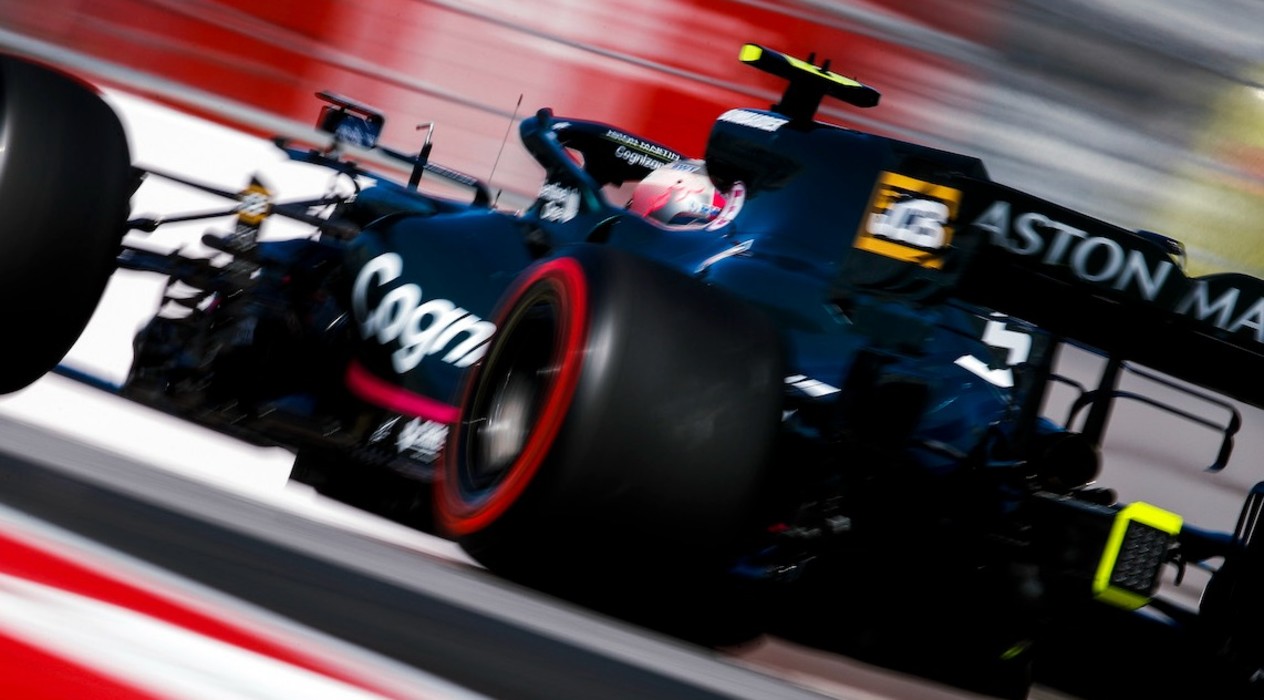
Ahead of the Turkish Grand Prix, Aston Martin Cognizant Formula One™ Team's Performance Director Tom McCullough gives his insight into what to expect from the Istanbul race.
From last season's wet weather running to getting up to speed on this still largely unfamiliar circuit, Tom explains the key challenges facing the team this weekend.
I've always enjoyed the Turkish Grand Prix. Istanbul is a great track because it's got a real mixture of low-, medium- and high-speed corners, which means the car's got to be able to do everything well.
It's an anti-clockwise circuit and quite hard on the right-hand side tyres. I think the drivers enjoy it because it's got a nice flow. The multi-apex, long Turn Eight is quite hard on the tyres, and the straight from Turn 10 to 12 is long.
When we went back last year after a nine-year gap, the track had just been resurfaced. It was very low grip, as it had only been done two weeks before we got there, which pushed us to run a lot more downforce.
I've found going to unfamiliar tracks in the COVID era really good fun and challenging. It tests your understanding, your simulation tools, simulator, and so on. Instead of going back to the same track every time, I like a change, and it's more of an opportunity.
The strategy is determined by how the tyres are performing. You look at races that had similar degradation and life differences, as well as pace offsets between compounds, to what we have now. That gives you a bit of an idea for the strategy.
Before we returned to Istanbul last year, we went back and read all the reports from 2011 and earlier. A lot of it is situational awareness. You get to understand the track, the weather, the temperatures, the strategies, and try to understand how 2011 relates to now.
The strategy is determined by how the tyres are performing. You look at races that had similar degradation and life differences, as well as pace offsets between compounds, to what we have now. That gives you a bit of an idea for the strategy, and you try to build as much of a picture as you can.
But a lot of it is, in all honesty, tackled when you get there. Istanbul last year was a prime example of that. We'd done a lot of simulator work, and we'd estimated a certain grip level. Then at the end of the first runs, the driver's eyes were out on stalks because the grip level was way lower than expected.
We had to react, and we had already erred on the side that it was going to be very low grip. There wasn't much more we could do. Then when it started to rain, the next challenge was getting the tyres working.
As a team in qualifying, we did a really good job. It was one of those sessions where the driver nails it, and you get the strategy right in terms of when to run and which tyre to fit.
The weekend will probably rattle out in largely the average pace order of this year if people get all their ducks in a row. But if they don't, then we'll try and seize the opportunity.
You have so many people supporting you at the track, so many people in mission control at the factory, the drivers. Everything just worked well, and we were first and third with Lance Stroll and Sergio Perez.
Come race day, others caught up a bit. We still earned a podium with Sergio, while Lance led a lot of the race. Unfortunately, we didn't quite get everything right on our calls: it was one of those challenging weekends.
I think we've now got a good understanding of the track. As for the Tarmac this year, let's find out when we get there.
Recently, the FIA sent out the usual pre-race document to the teams and told us that the entire track surface has been treated to increase the grip level. First of all, ageing a year helps it, and additional water blasting undertaken by the circuit is also beneficial.
The hardest thing when we're doing our offline simulations and simulator work is to know the grip level of the track. That determines what you do, how you operate the tyres, what downforce and drag level you run, etcetera.
So that's where we're at the moment and we've just got to go there open-minded. The tyre engineers always measure the track on Thursday and have a good look at it. Once we get running, we'll be open to changing the rear wing level if we need to.
And that's the big question mark, really. It'll probably rattle out in largely the average pace order of this year if people get all their ducks in a row. But if they don't, then we'll try and seize the opportunity.
Thanks to Aston Martin Cognizant Formula One™ Team's Performance Director Tom McCullough for making his mark on our team at the track: #IAMRACING.
Access I / AM to get closer to the team.
































